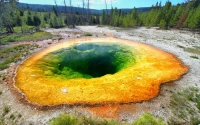Starlink's Skyfall: A Numbers Game of Ambition vs. Atmosphere
SpaceX's Starlink has undeniably changed the satellite landscape. But the narrative of ubiquitous internet access often glosses over a crucial metric: attrition. Just how many Starlink satellites have kissed the atmosphere goodbye before their time? The answer, it turns out, is a bit more complex than a simple count.
The Rising and Falling Tide
The latest data suggests over 500 Starlink satellites have re-entered the atmosphere since the program's inception in 2019. That's a significant figure (about 5% of the total launched), but it needs context. These aren't malfunctioning gadgets plummeting to Earth; they're casualties of a predictable, if somewhat amplified, phenomenon: atmospheric drag. Solar activity, with its flares and coronal mass ejections, heats the upper atmosphere, causing it to expand. This expansion increases drag on low-Earth orbit satellites, and when drag exceeds the satellite's ability to maintain altitude, it falls.
SpaceX anticipated some level of attrition. What's less clear is whether they fully accounted for the current level of solar activity. The sun goes through cycles, and we're currently in a period of heightened activity. The article mentions a "relatively busy solar cycle." But how busy, exactly? Was this within SpaceX's projected range, or an outlier? This is the part of the report that I find genuinely puzzling. If the data was available, why not include it for a more accurate estimate?
SpaceX continues to launch Starlink satellites at a rapid pace. Just this week, another Falcon 9 mission (Starlink 6-89) lofted 29 more into orbit from Kennedy Space Center. Booster B1092, on its eighth flight, successfully landed on the drone ship "A Shortfall of Gravitas." A second launch, Starlink 6-85, was also planned within the same four-hour window. This constant replenishment is key to maintaining the constellation's functionality, but it also raises the question: at what point does the cost of replacement outweigh the benefits? SpaceX launches 29 Starlink satellites on Falcon 9 rocket from NASA’s Kennedy Space Center – Spaceflight Now

Beyond Internet: Orbiting Data Centers?
Elon Musk has even floated the idea of future Starlink satellites becoming orbiting data centers. The next-generation V3 satellites, designed for gigabit internet, could potentially host AI training workloads. This would require even larger satellites (potentially 2,000 kilograms each, almost four times the mass of the V2 Mini satellites) and would rely on high-speed laser links for data transmission. Elon Musk: Future Starlink Satellites Will Become Orbiting Data Centers
This ambition is interesting, but it introduces new complexities. The heat generated by data centers is substantial. How would this be managed in space? What would the environmental impact be (both in orbit and on Earth, considering the resources required to build and launch these behemoths)? And how would SpaceX ensure the security of these orbiting data centers, protecting them from both physical and cyber threats?
Also, Starcloud, a startup, plans to launch a test satellite with an Nvidia H100 GPU for AI training, aiming to create a network of orbiting data centers powered by the sun. Is there a potential synergy or competition between Starcloud and SpaceX's vision?
It's worth remembering the sheer scale of the Starlink constellation. With over 10,000 satellites in orbit, it's a prime example of the growing congestion in space. While the satellites are designed to burn up in the atmosphere upon re-entry, the sheer number of re-entries raises concerns about atmospheric pollution. We need more data on the composition of these satellites and the byproducts of their incineration.
The Sky Is Getting Crowded
The narrative around Starlink often focuses on its potential to provide internet access to underserved areas. That's a noble goal. But the reality is more nuanced. The environmental impact, the cost of replacement, and the potential for space debris are all factors that need to be carefully considered. The question is, are we truly weighing these factors, or are we too easily seduced by the promise of technological progress?










